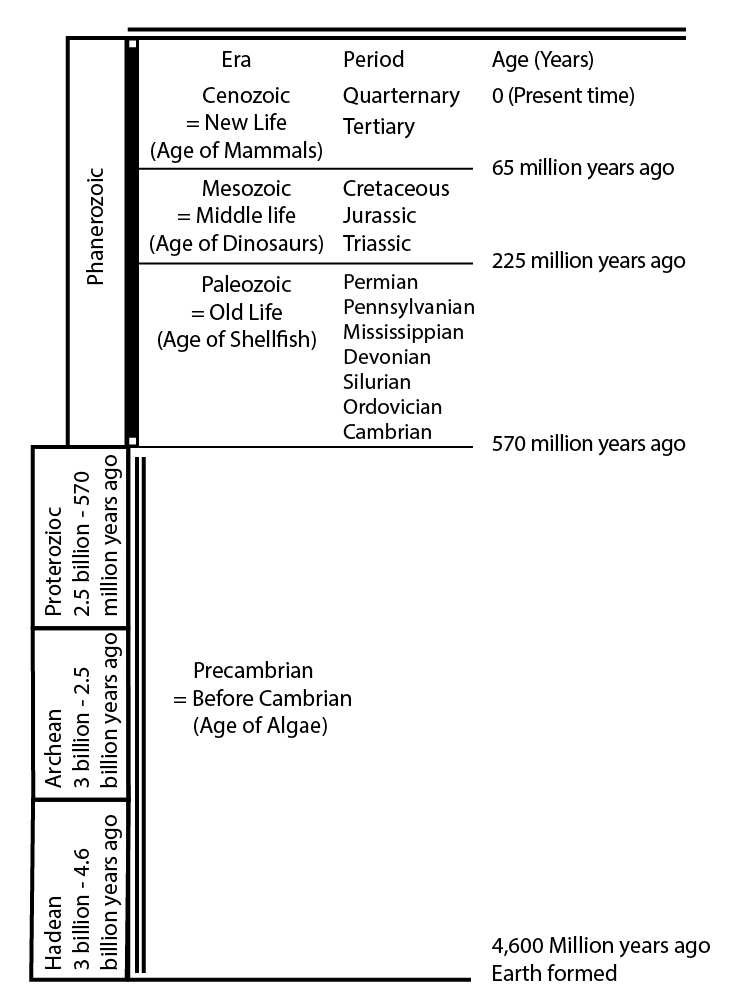The Cenozoic, Mesozoic, and Paleozoic Eras are lumped together into the Phanerozoic Eon; “Phanerozoic” is from Greek roots meaning that life showed itself. The Phanerozoic started with the fairly sudden (over a few million years) appearance of common shells, which greatly “improved” the fossil record. You have to look mighty hard to find the remains of a jellyfish in a rock, but with shells, the remains are the rock. Going back in time before the Phanerozoic are the Proterozoic (earlier life), the Archean or Archeozoic (beginning life; different people prefer Archean or Archeozoic), and the Hadean (like Hades; hellish).
The Hadean, from about 4.55 or 4.6 billion years to about 3.8 billion years ago, probably experienced such huge meteorite impacts that they vaporized the whole ocean and some rocks as well. Life would have been hard-pressed to survive such catastrophes.
Life was present by the beginning of the Archean, at about 3.8 billion years ago. The central regions of the continents had formed by the end of the Archean, about 2.5 billion years ago. Oxygen remained scarce or absent in atmosphere and ocean, and carbon dioxide helped keep the world warm under the gaze of a young sun that was not as bright as today.
In the Proterozoic, oxygen from cyanobacteria and other microbes “rusted” the oceans. Iron rusts with oxygen, but in the oxygen-poor world of the Archean, iron dissolved and washed to the ocean rather than rusting. As oxygen was released by photosynthesis, the iron was rusted and fell to the bottom to form the great banded iron formations that we mine today in Minnesota, Australia and elsewhere. Oxygen then increased in the atmosphere. First a poison to many living things because it is so highly chemically reactive, oxygen proved invaluable as life figured out how to use the “new” chemical, allowing development of larger organisms. Oxygen also shielded all organisms from damaging ultraviolet rays by giving rise to protective ozone in the stratosphere. As oxygen rose in the atmosphere and combined with gases there that were stable without oxygen but unstable with oxygen, those gases were removed. Some of those were strong greenhouse gases, and removal of them under the not-yet-modern-brightness sun allowed “snowball Earth” events that very nearly froze the planet.

| Era | Period | Age (Years) |
|---|---|---|
| Cenozoic = New Life (age of mammals) |
Quaternary Tertiary |
0 (present time) |
|
Mesozoic = Middle Life |
Cretaceous |
65 million years ago |
|
Paleozoic = Old Life |
Permian |
225 million years ago |
| Era/Period | Age |
|---|---|
| Proterozoic | 2.5 billion - 570 million years ago |
| Archean | 3 billion - 2.5 billion years ago |
| Hadean | 3 billion - 4.6 billion years ago |